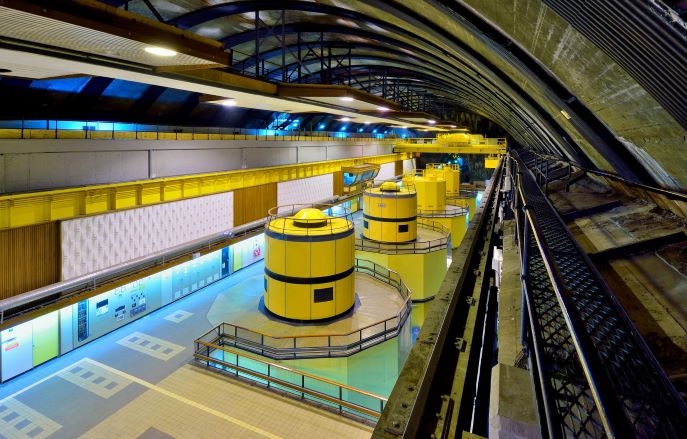Angeli Mehta reports that storage and permitting constraints in both Europe and the U.S. are increasingly important obstacles on the road to net zero
Revving up renewables is a major component of Europe’s plans to cut its dependency on oil and gas from Russia, in the wake of its war against Ukraine. That’s good news for efforts to reach net zero, but crucial issues of permitting and energy storage are also going to have to be addressed if Europe is to make its hoped-for renewables boom a reality.
Permitting renewable developments is an issue across the United States, the UK and EU. Trade groups had already warned the European Commission that if permitting processes are not simplified, the bloc will miss its Green Deal climate and energy targets; while the Brookings Institute said last year that permitting was a serious obstacle to achieving a zero-carbon grid in the United States by 2035. Federal agencies may have heeded that warning: in January they agreed to coordinate and streamline decision-making for clean energy projects on federal lands.
As more renewables come onto the grid, we’ll also need long-term storage to manage their intermittency and so better match supply and demand.
A decarbonised electricity system would require the UK to have 24 GW of long-duration storage capacity – eight times what is currently installed
In the UK, Boris Johnson’s government wants rapid deployment of offshore wind and, since the war in Ukraine, more onshore wind and solar. Aurora Energy Research calculates that a decarbonised electricity system would require the UK to have 24 gigawatts (GW) of long-duration storage capacity – that’s eight times what is currently installed. Long-duration storage can provide power for more than four hours and is currently met by pumped hydro, a method of storing energy where water is pumped to a higher elevation during off-peak times and released to drive turbines during demand spikes. However, there are only four facilities in the UK, with the last being built in the 1980s.
It's not an issue unique to the UK, says Emma Woodward, senior associate at Aurora. “As you are increasing the amount of renewables, you will need to increase the amount of flexible and dispatchable capacity (power that can be turned on and off to meet sudden surges in demand) in order to manage that intermittency. The countries that may not have the problem are countries like Norway, where you are relying on quite high levels of hydropower, which is both low carbon and can also be dispatched.”
Storage requirements are actually higher with greater reliance on renewables. This is because in a cold snap the UK, for example, relies on so-called “peaker” plants, powered by gas, which run only when there is high demand for electricity. To guarantee security of supply without gas, large amounts of energy would have to be stored that might never be used, says Woodward.

The UK has recently announced the first projects to win funding in its 68 million pound scheme to demonstrate new long-duration storage technologies. These include a project to make and store green hydrogen from otherwise curtailed wind power (which costs the UK economy millions each year), and another that uses gravity to store energy, which is then stored and discharged by raising and lowering weights in an underground shaft.
The government has also been consulting on how to incentivise investment in long-duration storage. The strongest contender is a cap and floor mechanism, which would set a minimum and maximum return for developers. Discussions are understood to be centred on a “soft” cap, whereby operators and government share the revenues.
Last year, the U.S. Department of Energy announced long-duration storage would be part of its Earthshots Initiative, aimed at slashing the cost of grid-scale storage by 90% within the decade.
The effect of a U.S. tax change could be ‘enormous in terms of actually practically making storage available and attractive’
The U.S. Energy Storage Association says the country needs 100 GW of storage by 2030 to meet its climate goals. Last year, it had 4.6 GW. In February, chief executives of storage technology and utility companies wrote to the president and congressional leaders, urging them to pass the Build Back Better Bill and tax provisions within it to help storage technologies scale. Fresh efforts seem to be under way to revive the bill, which includes critical clean energy provisions, after it was effectively killed off by Democrat senator Joe Manchin’s refusal to approve it.
But Uday Varadarajan, carbon-free electricity principal at the Rocky Mountain Institute, contends that the United States also needs to remove obscure legal restriction on investment tax credits, which are available for storage and solar. These mean that investor-owned utilities are prevented from passing on the full benefit of the tax savings to their customers.
“I would argue that this has been one of the largest constraints that has kept storage from scaling the way it ought to,” he said, during a recent webinar.

The effect of the tax change could be “enormous in terms of actually practically making storage available and attractive for utilities across the country”.
In the meantime, cutting some reliance on Russian oil and gas can be met by energy efficiencies – another neglected area in the race to net zero.
Analysis by Germany’s climate policy think-tank Agora Energiewende suggests energy efficiency measures, together with a rapid ramp of renewables, could cut Russian gas imports by 80% by 2027. The buildings sector alone could contribute 40% of that effort through energy efficiency, district heating and rapid roll-out of heat pumps.
This article is part of the April 2022 Sustainable Business Review: See also:
Brand Watch: In the face of war, companies need to both act and advocate
ESG Watch: War in Ukraine sheds harsh new light on sustainable finance

